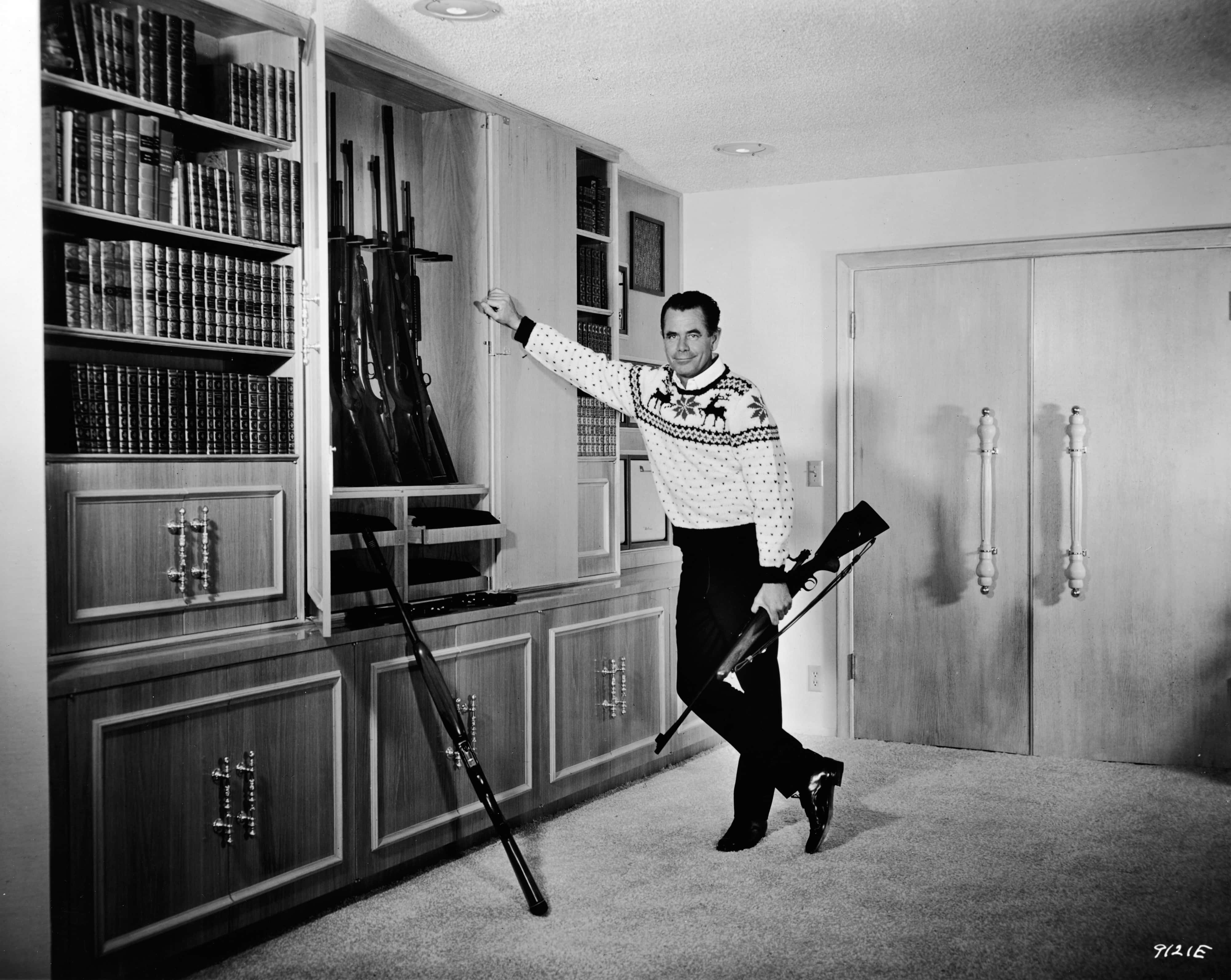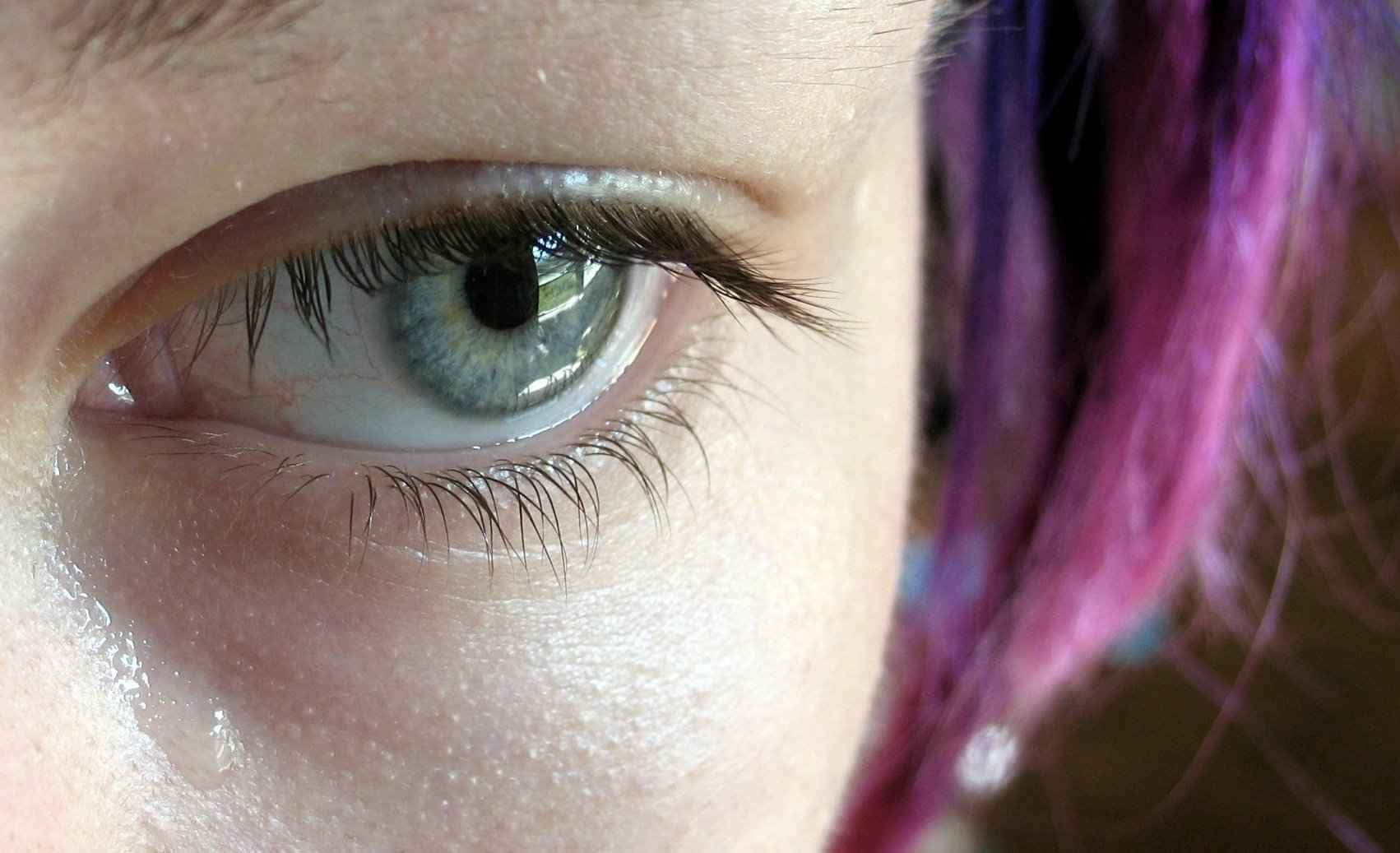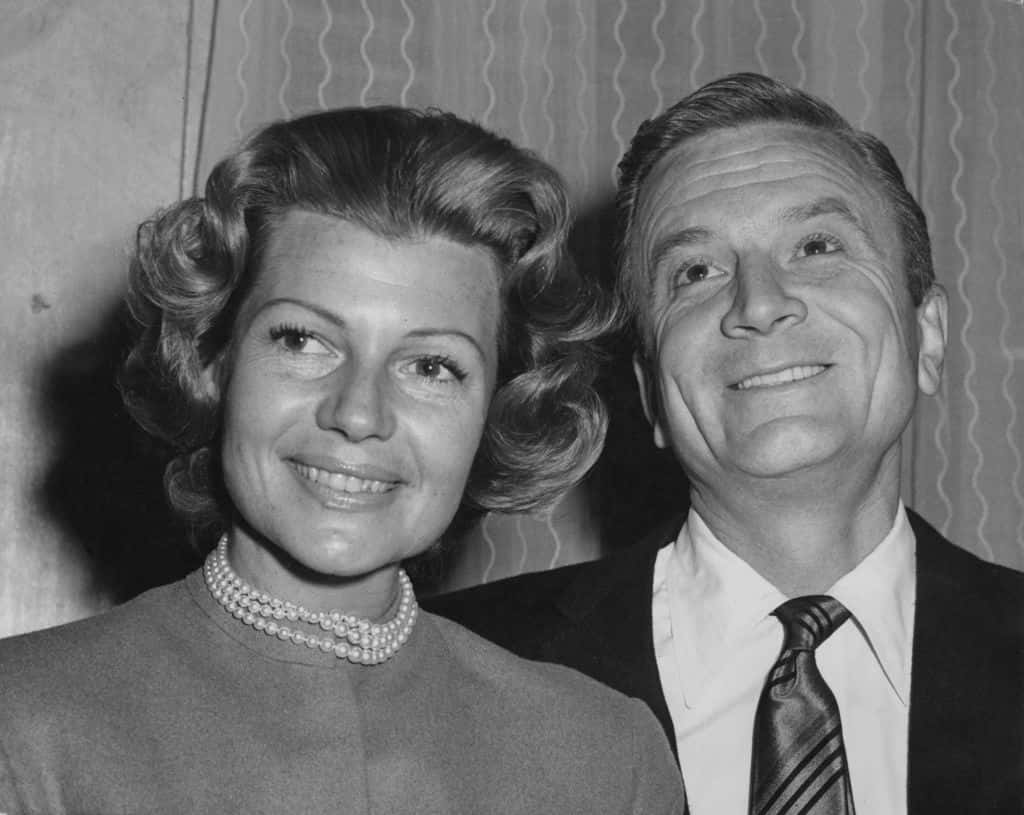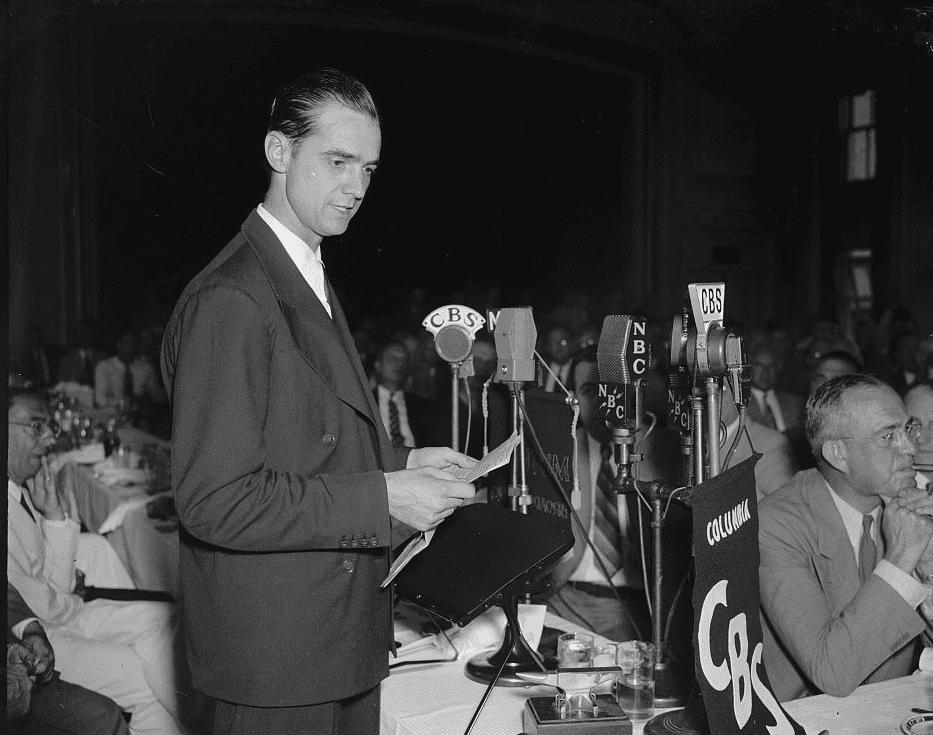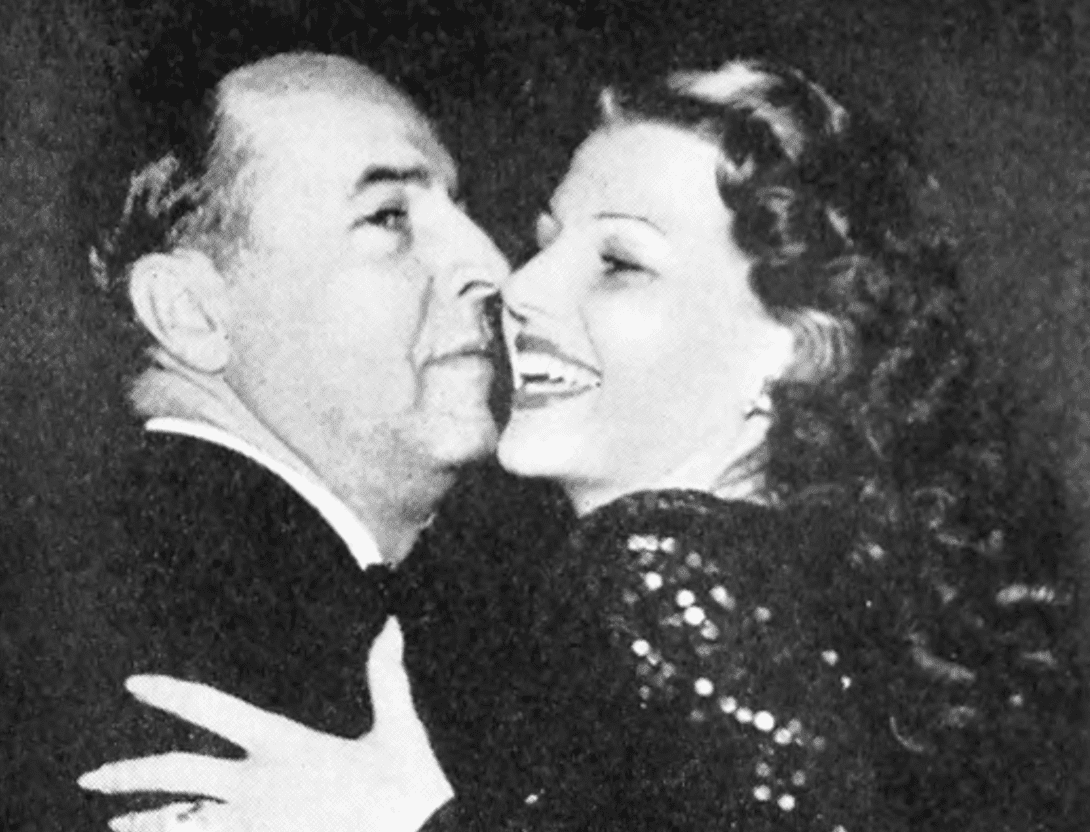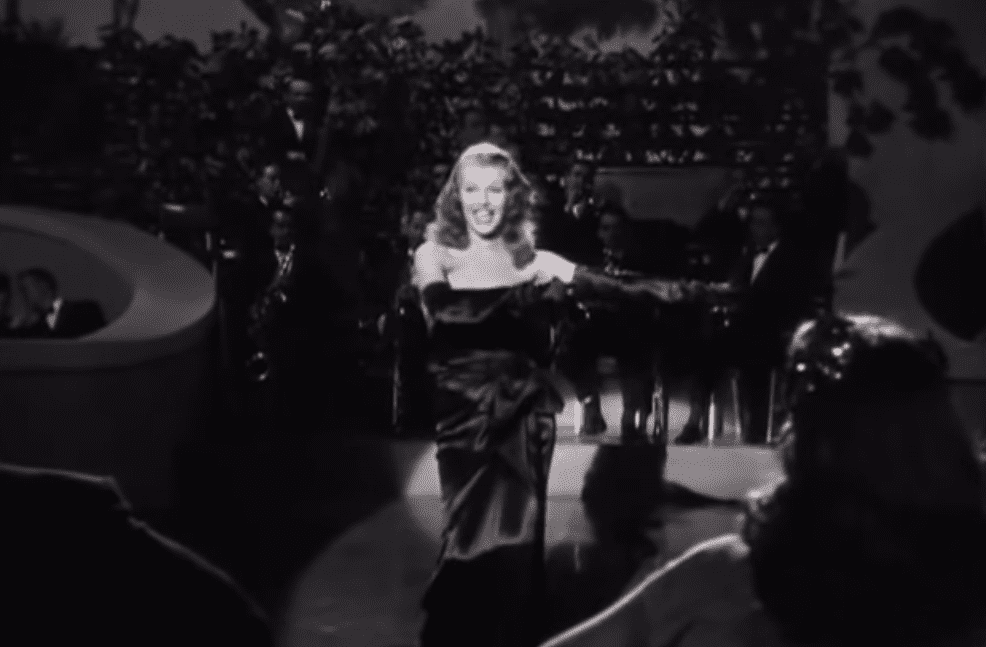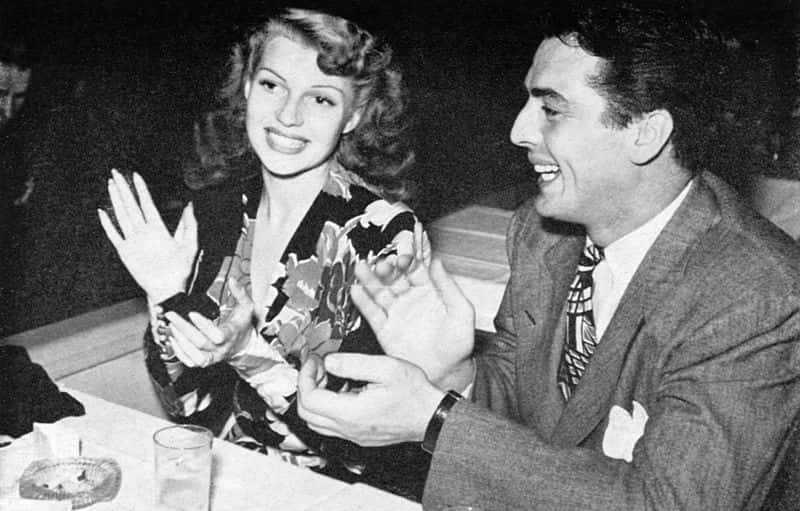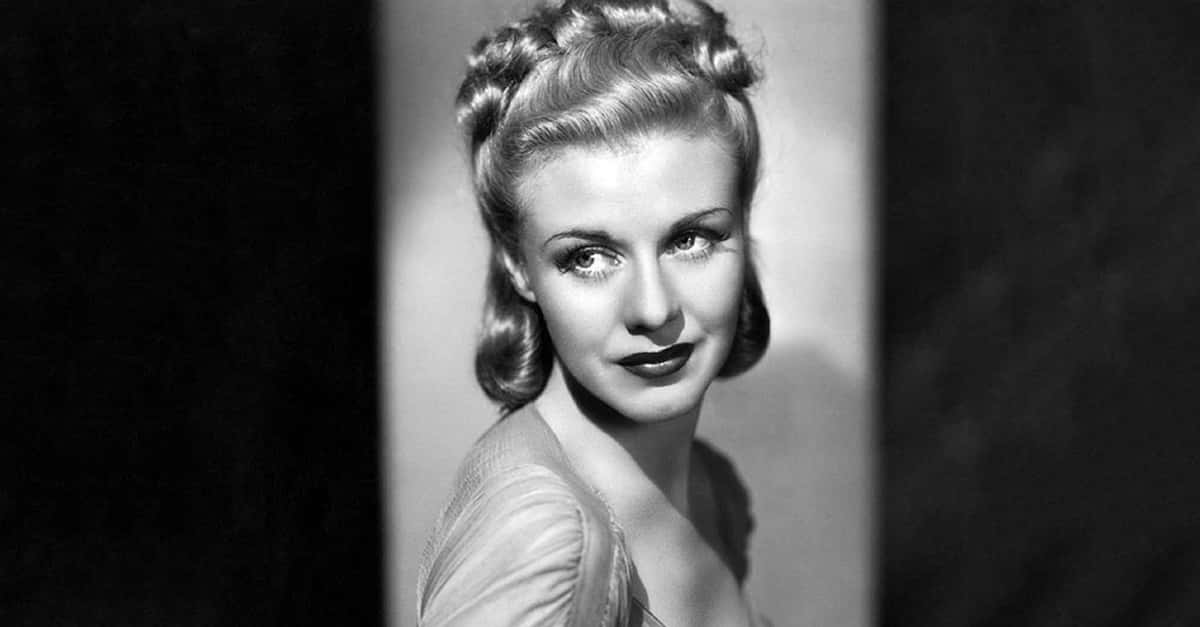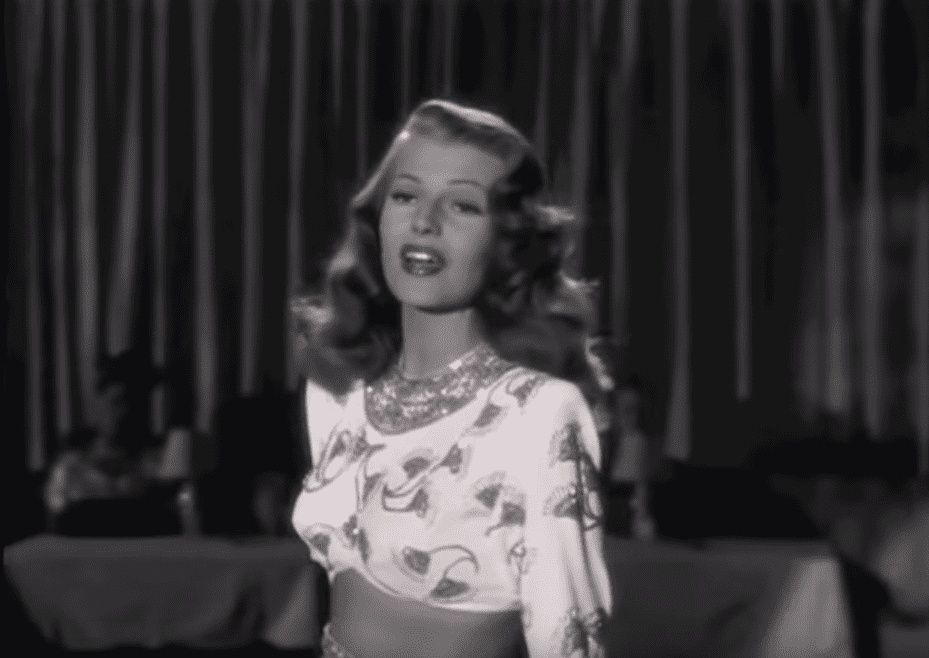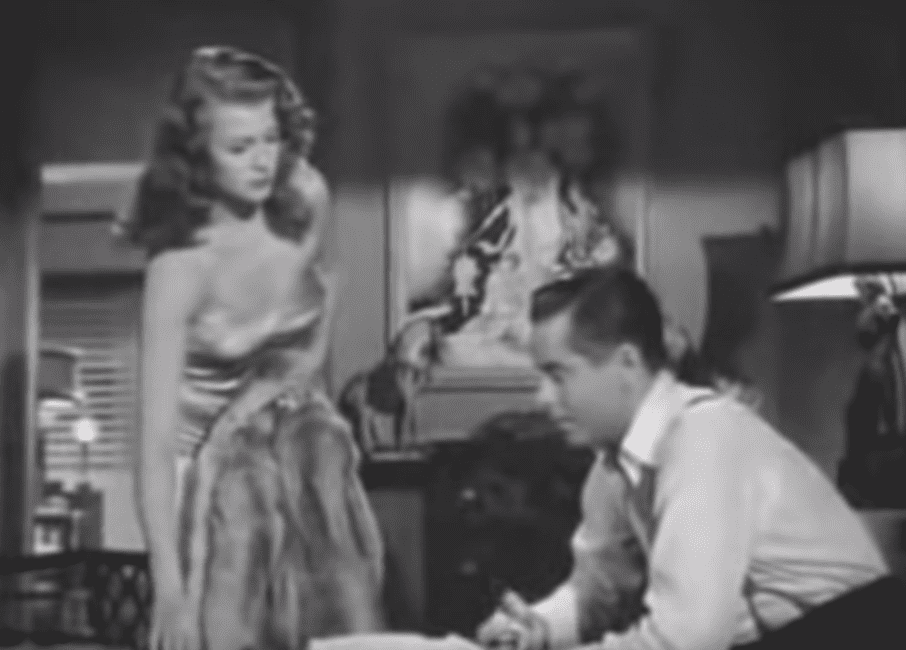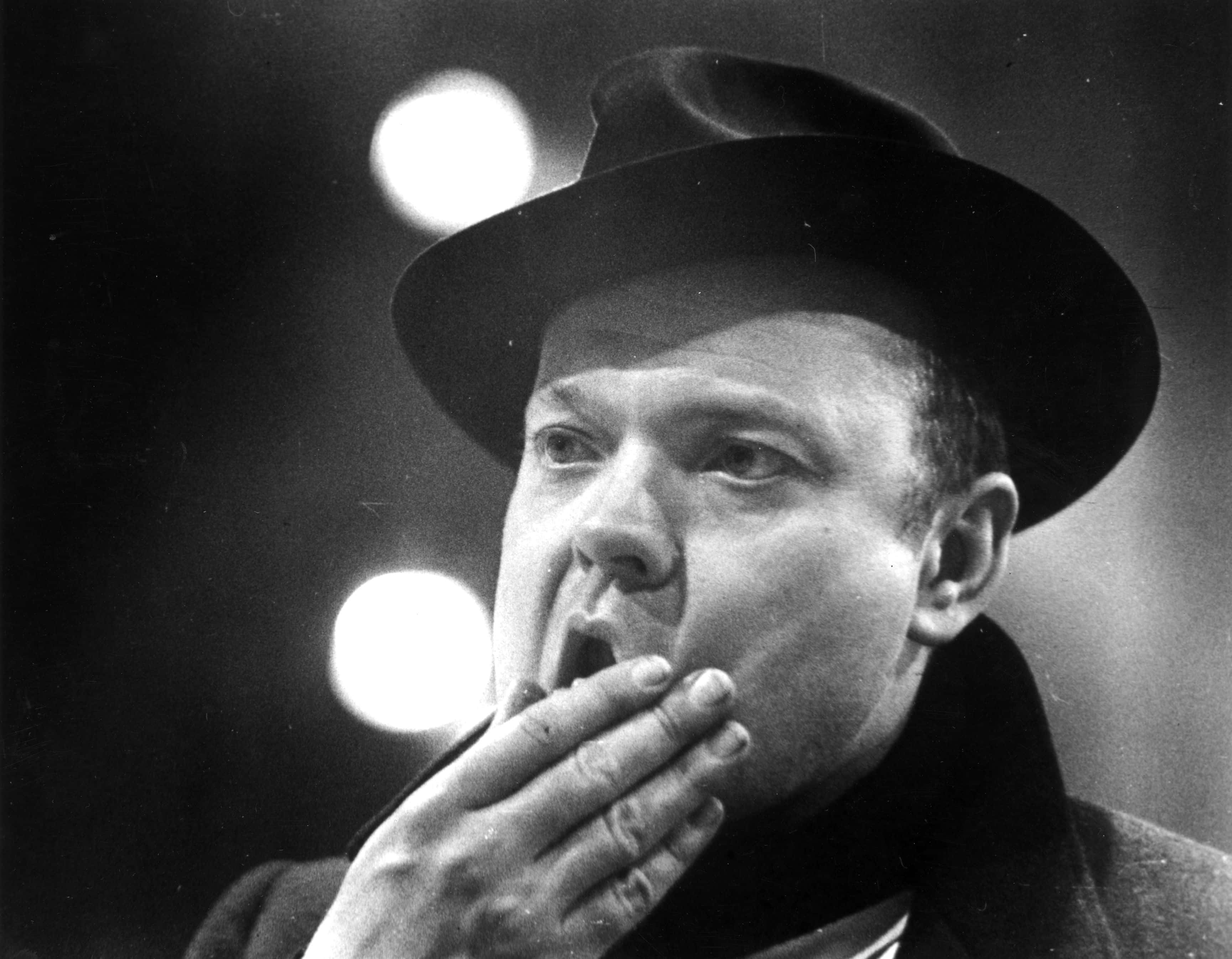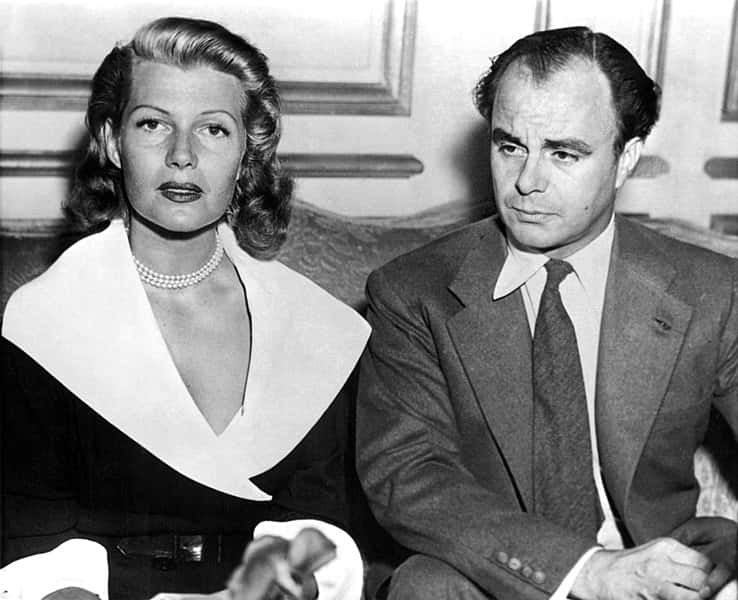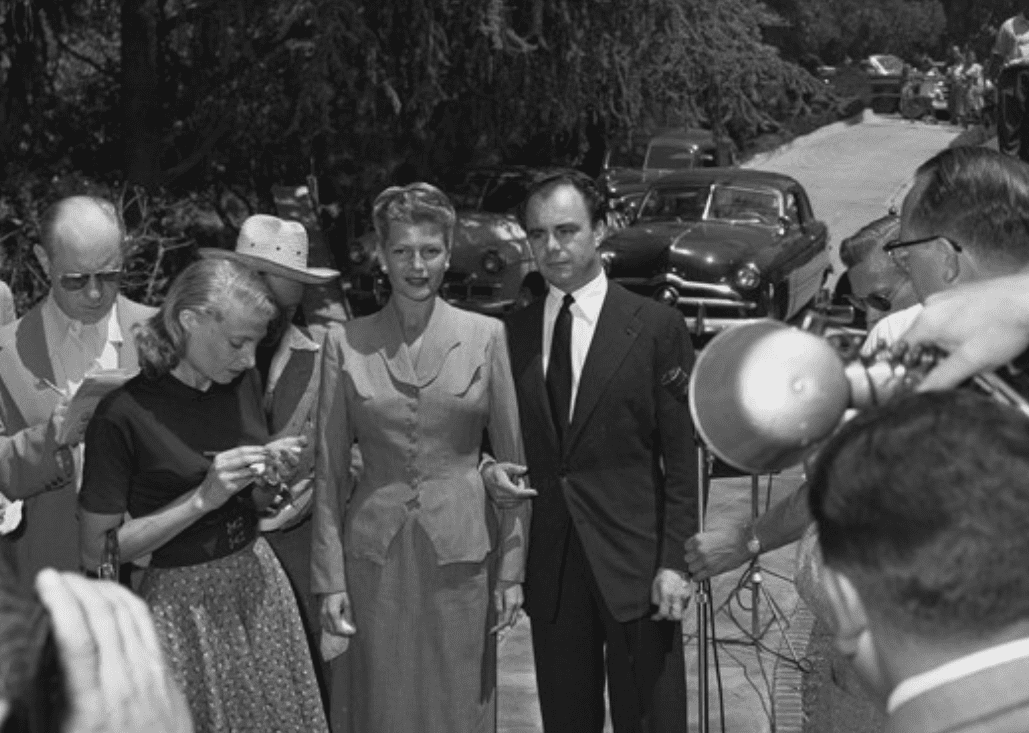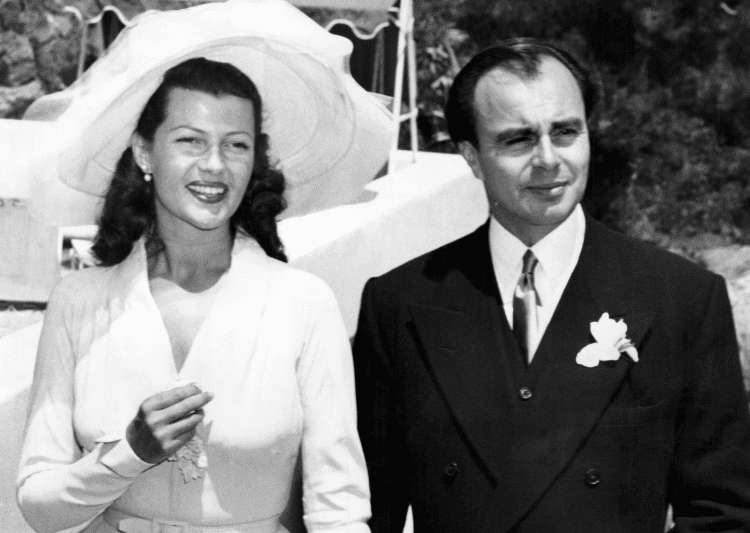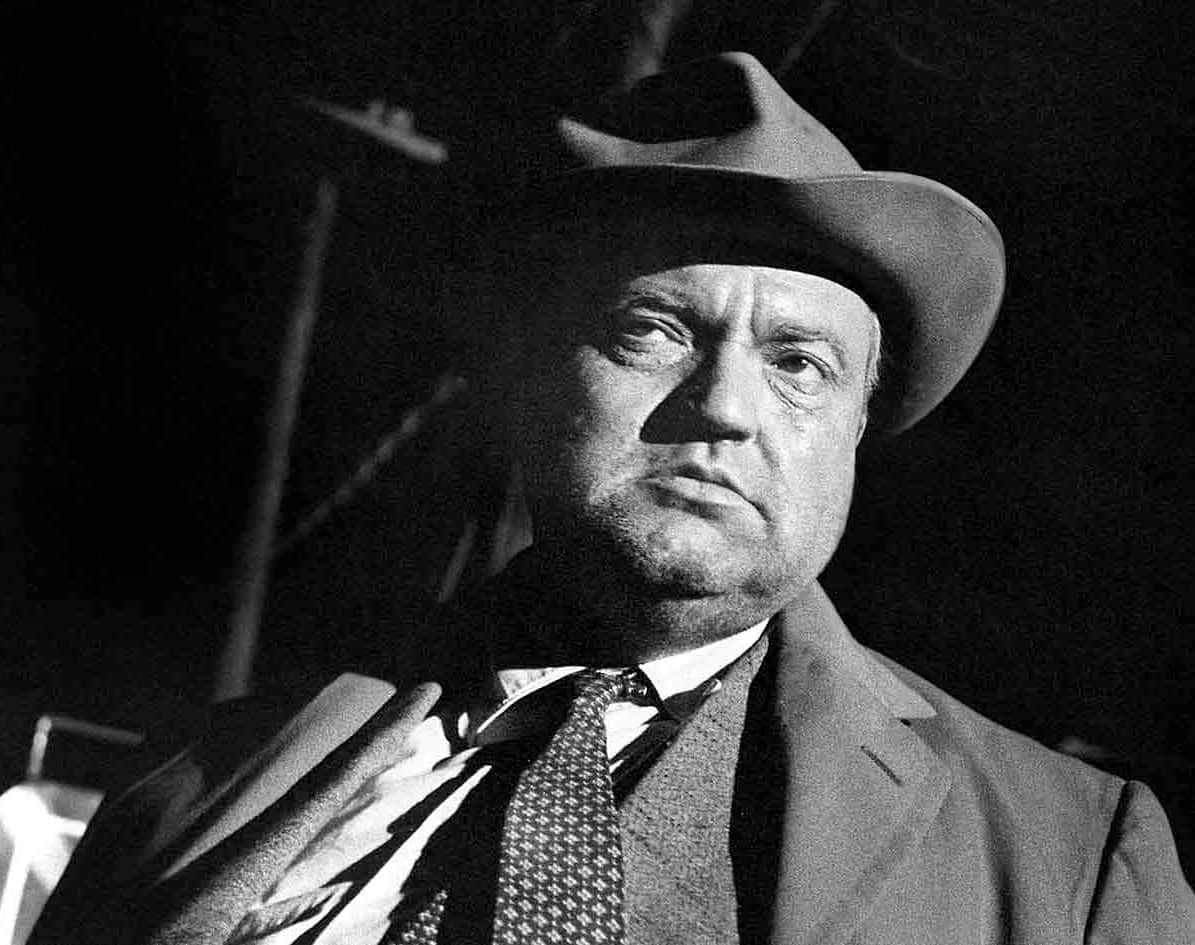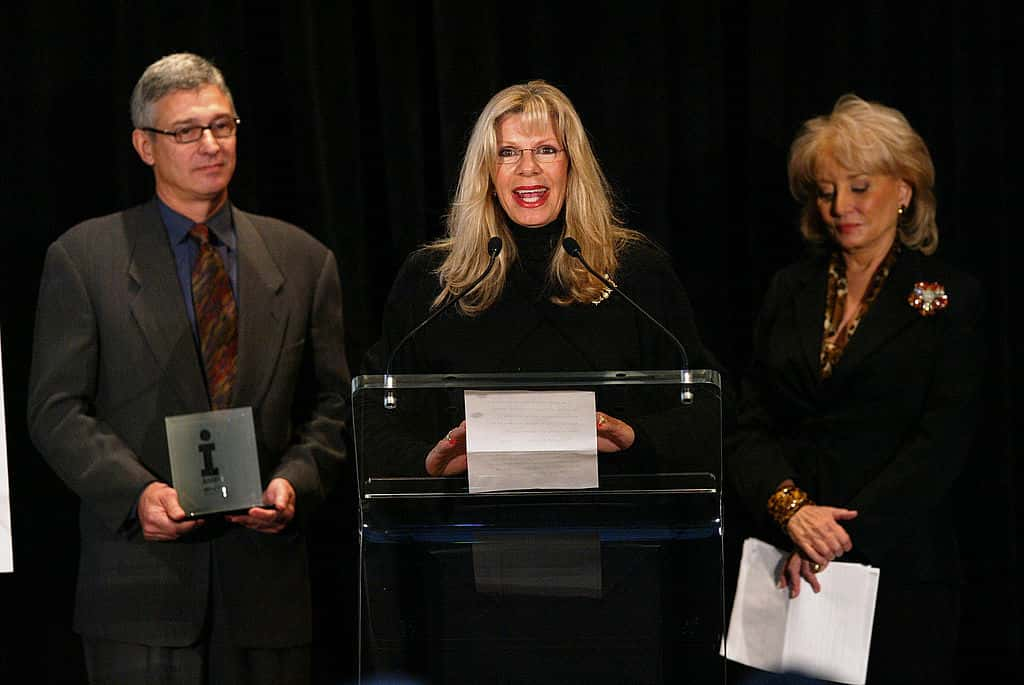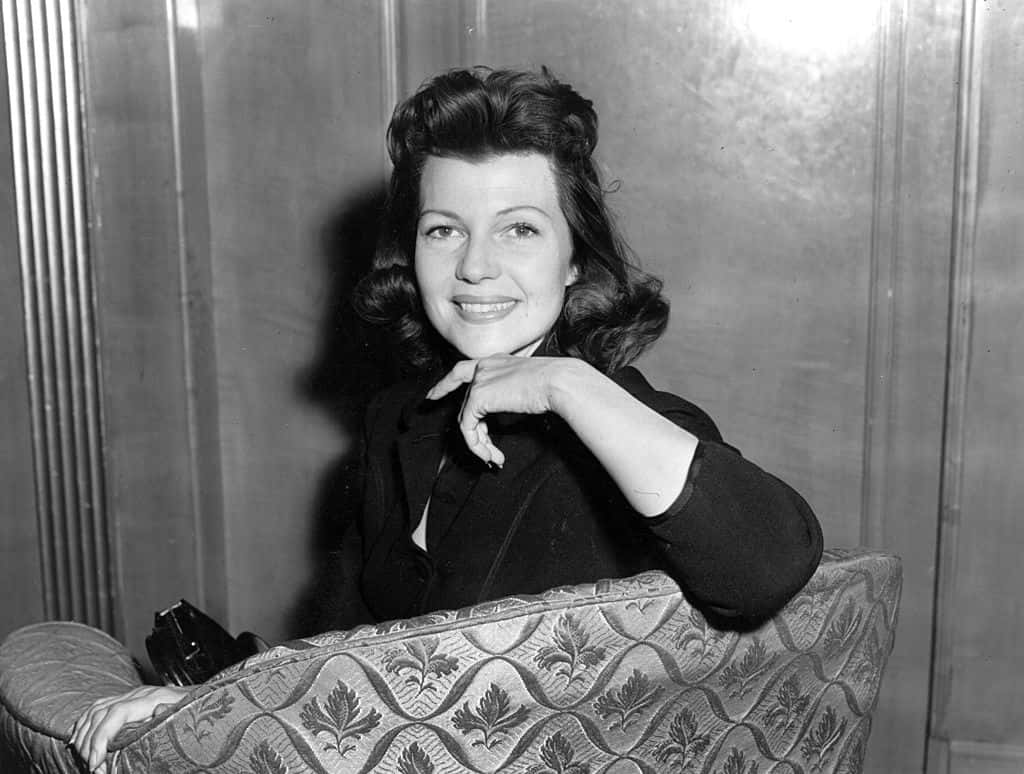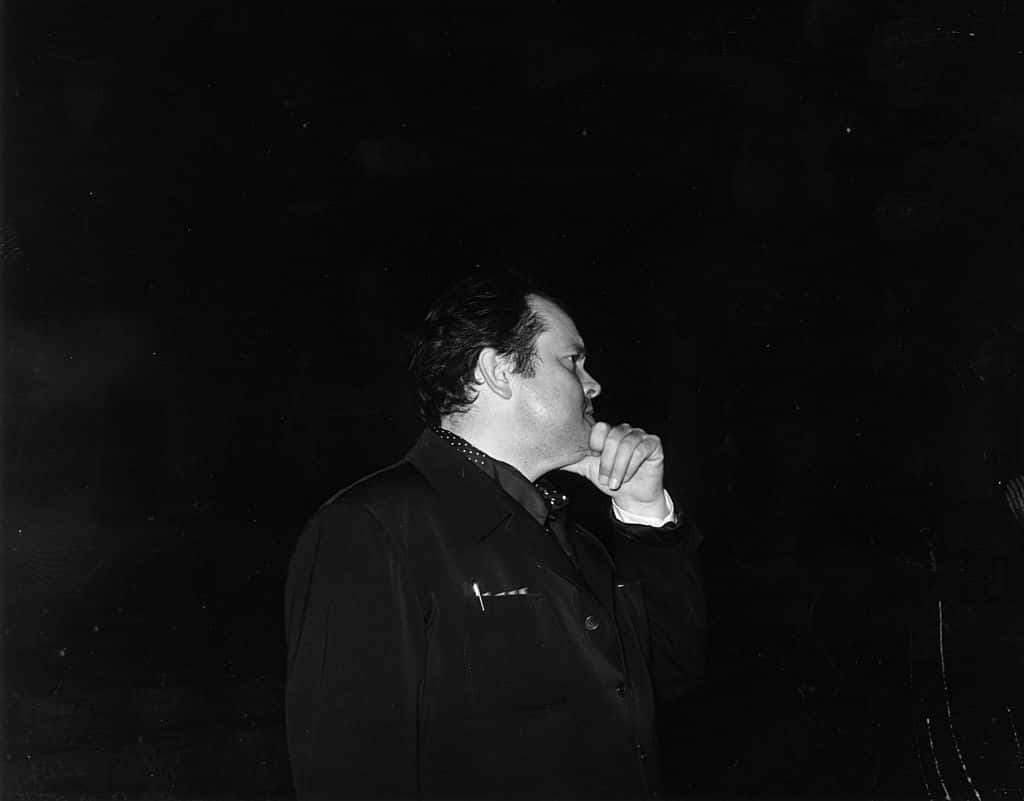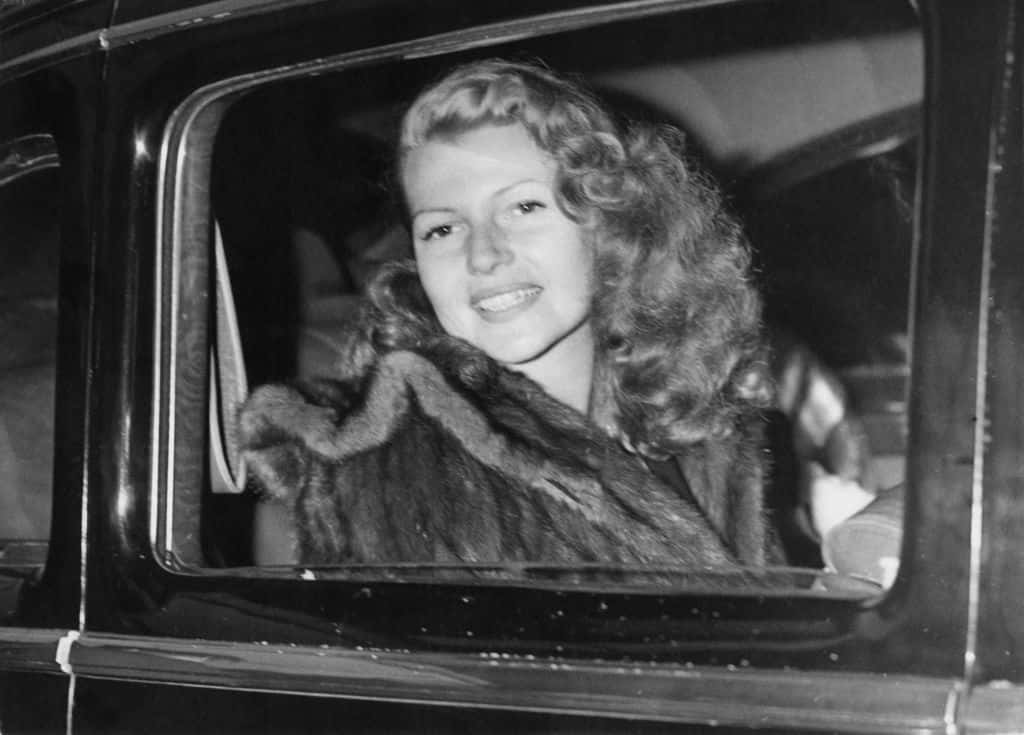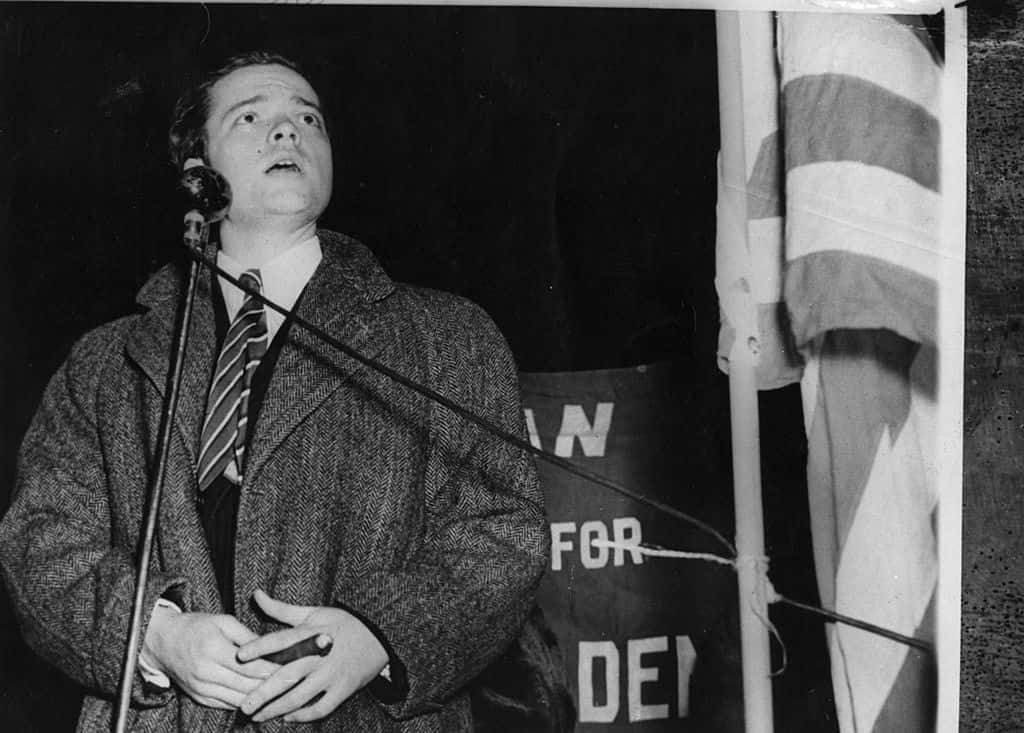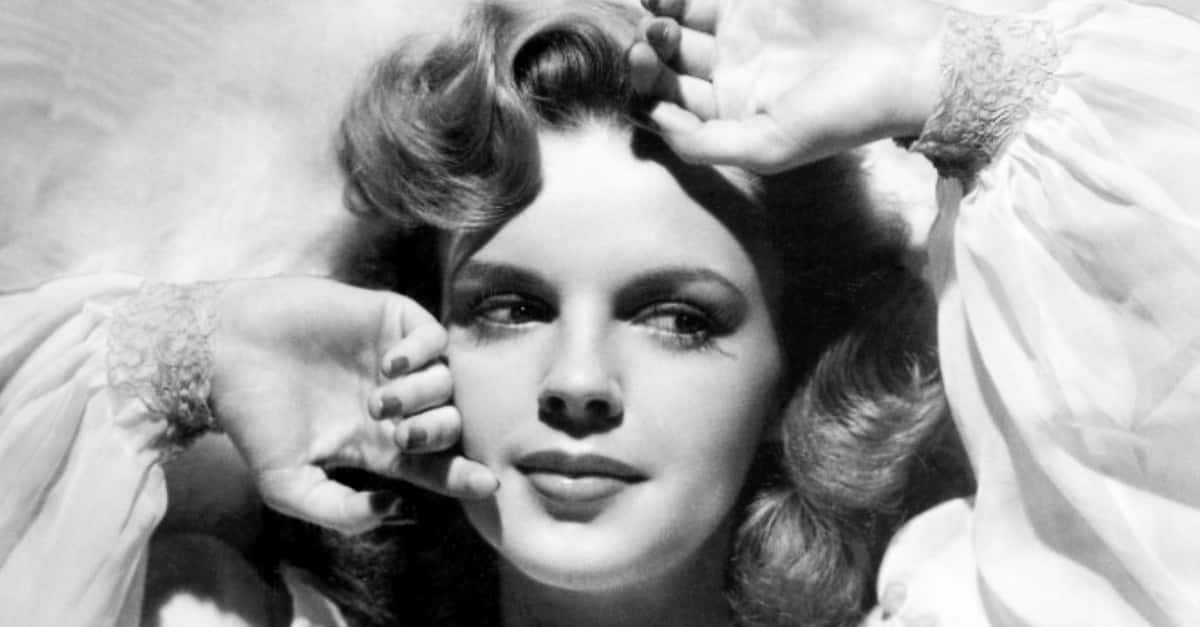Rita Hayworth was one of Hollywood’s biggest, most beautiful stars of the 1940s—they called her the “Goddess of Love”—but in real life, Hayworth suffered in love. Her stardom was manufactured by the Hollywood studio system of the time, and she was the first Hollywood star to marry into a royal family—but it was hardly a fairy tale.
Unfortunately, she would also become the first famous person to suffer publicly from Alzheimer’s disease. Here are 41 riveting facts about Rita Hayworth.
Rita Hayworth Facts
1. Brooklyn Baby
Hayworth’s real name was Margarita Carmen Cansino. Born in Brooklyn, New York, in 1918, her mother was American, and her father was Spanish, emigrating to the US in 1913. Hayworth also had two younger brothers. As we'll see, unfortunately, Hayworth's Spanish ancestry would cause her a world of pain when she tried to make it in Hollywood.
2. First Film—La Fiesta
Hayworth’s parents were both professional dancers. She started dancing young, and her father made her practice, practically every waking moment, at home. When Hayworth was only eight years old, she appeared with her father’s dance troupe in a 10-minute long, black and white movie called La Fiesta. She smiles in the performance, but young Hayworth's life was far from picture-perfect.
3. She Drove a Ford
Hayworth’s co-star in one of her most famous movies, Gilda, was the Hollywood actor, Glenn Ford. Their relationship onscreen was tumultuous, though it didn't seem like that changed when the cameras stopped rolling. During a fight scene between their characters in the movie, Hayworth really did knock out two of Ford’s teeth.
4. Worse Than Weinstein
To the truly heartless, Harry Cohn—who ran Columbia Pictures, when Hayworth landed a contract with the studio—was the brilliant executive responsible for shaping her stardom. Behind the scenes, however, Cohn was utterly monstrous.
5. He Faked Her ID
Hayworth left school at just 12 years old, when her father, Eduardo, reinvented her as his dance partner. He dressed her, and made her up, to look much older, and they started performing together, as the Dancing Cansinos, in Tijuana, Mexico.
According to Hayworth, her father did far worse things than make her quit school and conscript her into working when she was still a child. He also beat and assaulted her her, beginning when she was just 10 years old.
6. Dinner Disaster
Hayworth really knew how to pick em. For a brief time, she was married to a film producer named James Hill.
While at dinner with Charlton Heston, Hill was so viciously cruel to Hayworth that Heston and his wife stood up and left. In his autobiography, Heston wrote that he always regretted walking away from Hayworth in her time of need.
7. Mistress of the Mysterious Hughes
Men idolized Hayworth, as her star rose higher in Hollywood, during the 1940s.
One of her more notorious lovers of this time was the mysterious, rich, and powerful, Howard Hughes.
8. The Margarita Legend
If anyone deserves to have the most popular cocktail in the US named after them, it should be Hayworth. She was convinced that the Margarita was invented just for her, in Tijuana, Mexico, when she danced there under her real name, Margarita Cansino.
This fact remains unproven, and the history of ‘Hayworth and the Margarita’ may be destined to remain a myth.
9. Young And Sweet, Only 17
Under her real name, Margarita Cansino, Hayworth was ‘discovered’ and signed to 20th Century Fox movie studios. The young star was only 17 years old. But the new starlet’s fame was short-lived. Soon after signing the contract and appearing in a few minor roles, the studio coldly dropped Cansino from their roster.

Sign up to our newsletter.
History’s most fascinating stories and darkest secrets, delivered to your inbox daily. Making distraction rewarding since 2017.
10. Putting Her Dancing Foot Down
Hayworth’s voice may have been dubbed by real singers in movies, but in real life, she could speak her mind. She defiantly refused to become intimate with Harry Cohn.
11. The Darkest of Knights
Eduardo Cansino was desperate for his daughter to get famous in Hollywood. After Margarita’s first contract with 20th Century Fox quickly dissolved, Cansino took his chances and risked it all. He hired a sleazy promoter named Edward Judson to get his daughter another contract.
Judson proved to be the exact opposite of Hayworth’s knight in shining armor.
12. According to Astaire
Fred Astaire was one of the greatest dancers of Hollywood’s golden age of musicals. He was often paired up with Ginger Rogers (Hayworth’s so-called ‘cousin’ by marriage), but, when he was cajoled into it, he secretly confessed that his favorite dance partner was Rita Hayworth.
13. Seven Years of Bad Luck
Edward Judson, hired by Hayworth’s father to get her a permanent Hollywood studio contract, did what he was hired to do, at least. In hindsight, though, his arrival was more of a curse than a blessing. Judson practically owned young Margarita Cansino.
Under his orders, the young starlet started to dress more provocatively. She changed her black hair to red. She even changed her name, going by the now-iconic moniker Rita Hayworth.
Hayworth even changed her hairline—through torturous rounds of electrolysis—to reshape her face. After enduring this, Hayworth landed a seven-year contract, with Columbia Pictures.
14. The Movie Equivalent of a Pin-Up
Hayworth had become a movie star, prior to the release of Gilda—but it was in that movie that her reputation as a femme fatale really took off. To this day, Gilda is known for making Hayworth a cultural icon.
15. First—and Tied for the Worst—Husband
After all the pain brought on Hayworth by Judson, we'd expect Hayworth to never want to see him again.
Instead, she fell in a twisted kind of love. Hayworth eloped with Judson even though he was a whopping 22 years older than Hayworth. But that's not the worst part. Judson frequently pressured Hayworth into becoming intimate with studio executives to ‘advance’ her career.
16. She Got Mature, and Brought Mature
When Hayworth was 23 years old, she starred in the movie, Blood and Sand. The film was successful, crowning Hayworth as a new, young starlet.
Gaining a degree of confidence, and maturity, Hayworth decided to walk out on first husband, Edward Judson. He threatened to disfigure her face, if she left him. But Hayworth brought back-up with her—a tough-guy actor, named Victor Mature, who was her lover at that time.
17. Related to Rogers?
For years, movie-goers wondered if the rumor was true.
Was Rita Hayworth truly related to fellow Hollywood icon, Ginger Rogers? In a shocking twist, the answer is yes. Here’s the breakdown: Hayworth’s mother’s brother, was married to Roger’s mother’s sister. While this means that the two stars aren’t related by blood, just connected through marriage, the two famous dancers are still cousins.
18. The Jerk Took Her to the Cleaners
After Hayworth left her cruel first husband Edward Judson, he came up with a disturbing plan for revenge. He demanded her whole assets, before he would grant her wish for a divorce.
As Hayworth's second husband, the famous director Orson Welles, said later in Hayworth’s defense, “Rita didn’t just have her father to contend with, she also had that first husband”.
19. A Bomb Was Named After Her
In 1946, history’s fourth atomic bomb was detonated, in a test over Bikini Atoll, in the Pacific Ocean. In honor of her bombshell status, that bomb had a picture of Hayworth on it, with the name ‘Gilda’ stencilled on it too.
20. She Blew up When She Heard
When Hayworth found out that an atomic bomb was being named after her Gilda character, she completely mistook it as an insult.
According to then-husband Orson Welles, Hayworth went almost insane with anger.
21. Welles Fell for Her
Famed actor, writer-director, and producer, Orson Welles caught a glimpse of a famous pin-up picture of Rita in Life magazine. He fell for the ravishing redhead immediately. They married in 1943, but, within a year, their love affair ended for a tragic reason. Welles realized that Hayworth wasn’t the ‘Love Goddess’ she portrayed in films. Instead, she was an insecure, abuse-scarred woman who would never heal from her awful past.
 Wikimedia Commons, RKO Radio Pictures
Wikimedia Commons, RKO Radio Pictures
22. Her Longest Affair
Despite Hayworth's accidental punch at her Gilda co-star Ford, the actors began an on-and-off affair during the making of the movie. In a surprising twist, their tumultuous relationship was no flash in the pan. Instead, it lasted for 40 years. In the 1960s, Ford even moved next door to Hayworth, in Beverly Hills, and the duo maintained a relationship until the early 1980s.
23. That Didn't Go Welles
Hayworth’s second husband, Orson Welles, tried to reshape her image, and revamp Hayworth’s look, her career, and her education. It was a familiar pattern of controlling Hayworth, although Welles thought his motive—to craft Hayworth into a woman who was both beautiful, and brainy—was done out of love. Their marriage, and Welles’ vision of Hayworth, ultimately failed.
24. A Tragic Mom
Hayworth gave birth to two daughters, one with Orson Welles, and the other, with Prince Aly Khan.
In 1954, she left her children with a babysitter while she took off on a Florida vacation with husband number four, Dick Haymes. But that's not the worst part. Apparently, the babysitter was in over her head and a neighbor noticed Hayworth's children playing in trash. This neighbor decided to notify the Society for the Prevention of Cruelty to Children.
25. Vicious Cycle
Though the Society did not charge Hayworth, the episode devastated her. As Hayworth biographer Barbara Leaming noted, Hayworth wasn’t an intentionally bad mom. It was Hayworth’s own dark childhood that rendered her unable to properly parent her kids.
26. Pursued by a Prince
Hayworth’s third marriage brought her the closest to a fairy tale. Prince Aly Khan, as he was known, was a fabulously rich playboy and adventurer whose family owned a pricey stable of racehorses.
Khan had a private movie theatre in his palatial residence on the Riviera, and his favorite film, in 1948, was Gilda...starring Rita Hayworth.
After watching the film numerous times, Khan was hooked. There was just one problem: he was still legally married to his first wife—but that was a trifling matter, to the Prince.
27. He Got Game
Prince Aly Khan was a legendary lover.
He was also called the most promiscuous man in Europe. Blame that on the ‘ancient Arabic art of imsák’ that Khan studied, as a young man, to control his muscles, and his climaxes.
28. They Could Have Danced All Night
Khan had someone plan a fancy party on the French Riviera shortly after Hayworth’s arrival there. Khan waited at the bottom of the staircase as Hayworth made a grand entrance.
He never left her side that night. In following days, he invited her to his spectacular house, where they slow-danced alone in his grand ballroom for hours.
29. Rochester Did It First
Khan lived in an oceanfront estate on the Riviera, with gorgeous views, a sparkling pool, and attentive servants. He also had a bedroom safe that held thousands of dollars in practically every currency so Khan could take his private jet anywhere at the drop of a hat.
Still, Hayworth had to be further convinced that she was ‘in love’ with him. Khan apparently hired a gypsy fortune teller to come to his estate, to assure Hayworth that Khan was ‘the one’.
30. She Played Impossible to Get
After wining, dining, and bedding Hayworth, Khan decided it was time to wed her.
But when he proposed for the first time, tragedy struck. She refused him. Hayworth returned to the US, and Khan immediately followed her, moving into a house right across the street from her LA estate. Khan kept up with his ardent romancing, and he continued to ply her with gifts…the most adorable was a small puppy.
31. Nothing Like a Fairy Tale Shotgun Wedding
Hayworth finally agreed to marry Khan, when she became pregnant with their daughter, the future Princess Yasmin Aga Khan.
32. No Help from Mother
Hayworth’s mother, Volga Hayworth, was a popular Broadway showgirl when she met Hayworth’s father, Eduardo. Tragically, the couple was doomed to an utterly heartbreaking end. Volga fell deeply into alcoholism, and she died in 1945, at just 47 years old.
33. Holla We Want Prenup!
Hayworth probably wouldn’t have listened to that Kanye song anyways. She declined a prenuptial agreement with Khan, for reasons unknown.
It made the prince happy, though. He gave her a priceless diamond necklace to thank her.
34. A Shocking Case of Cold Feet
Hayworth always said that Orson Welles was her greatest love. Right before her 1949 wedding to Prince Aly Khan, Hayworth cried out to Welles, begging him to see her. Welles arrived at her hotel to a startling sight.
35. Four Year Itch
Hayworth married Khan in 1949, and gave birth to their daughter, Princess Yasmin Aga Khan, in December of that year.
The marriage barely lasted until 1953. Although Khan professed to be deeply in love, his actions did not match his words. He was never faithful and may have had an affair with Hayworth's rival Joan Fontaine.
On top of this, Hayworth's temper tantrums—caused by their unstable home life and the residue of Haywood's childhood trauma—were epic. Hayworth married two more times in her life, but never successfully, or for long.
36. Order in the Playroom
Hayworth’s daughter with Khan, Princess Yasmin, was three years old when the pair were snarled in a nasty divorce. While Hayworth battled it out with Khan in front of a judge, their daughter took the oblivious opportunity to treat the court like her own personal bouncy castle, at one point even climbing into the Judge’s lap!
37. Drinking Her Problems Away
Both Orson Welles, and daughter Yasmin Aga Khan, commented publicly on Hayworth’s abuse of alcohol. They felt utterly helpless as they watched Hayworth slowly destroy herself.
Sadly, things would only get worse. In 1974, tragedy struck. Hayworth’s two brothers died within a week of each other. Her inconsolable sadness fuelled more devastating drinking.
38. This Sad Truth Didn’t Set Her Free
Hayworth’s daughter, Yasmin Aga Khan, has described the “two decades of hell” she experienced with her mother, prior to Hayworth receiving a proper diagnosis of Alzheimer’s disease in 1980. However, there was a heartbreaking silver lining. While it was the beginning of a tragic end to the tragic life of Rita Hayworth, Hayworth’s fame, at least, lent much-needed publicity to a disease that was still shrouded in mystery.
39. Her Mother's Daughter
Khan became her mother’s conservator, caring for Hayworth, until Hayworth’s death in 1987. Khan has also become a dedicated advocate for Alzheimer’s research, fundraising extraordinary amounts of money into treatments.
40. In World War II, She Was Number 2
A sensual, lingerie-clad Hayworth was photographed for Life magazine in August 1941. That picture was the second most popular pin-up for all American troops, during World War II.
In fact, the famous movie The Shawshank Redemption was originally titled Rita Hayworth and the Shawshank Redemption. In Stephen King's novella, one of the prisoners has her poster up in his prison cell.
41. Welles Gets the Last Word
Orson Welles gave a final interview on the evening before his death in 1985. He poignantly called Hayworth, "one of the dearest and sweetest women that ever lived"…a fitting tribute to the outer beauty, and inner talents, of Rita Hayworth.
42. The Double Step
Rita Hayworth's father was really one for the books.
Not only did he bar his daughter from an education and abuse her, he also forced her to perform with him as a dancing duo. They were called the Dancing Cansinos and to make the act seem less sinister, Mr. Hayworth told a terrible lie about the relationship between himself and his young dance partner.
Instead of admitting young Rita was is daughter, he passed her off as his wife.
Hayworth was forced to perform in rowdy gin mills, and raunchy, floating casino boats, in Mexico, and off the California coast.
43. The Secret Destroyed Her Life
Hayworth’s unwilling, incestuous relationship with her father may have remained in the dark, if biographer Barbara Leaming had not broached the delicate subject with Orson Welles, Hayworth’s second husband. In the interview, Welles broke down, admitting that Hayworth had confided her terrible secret to him, during their marriage.




